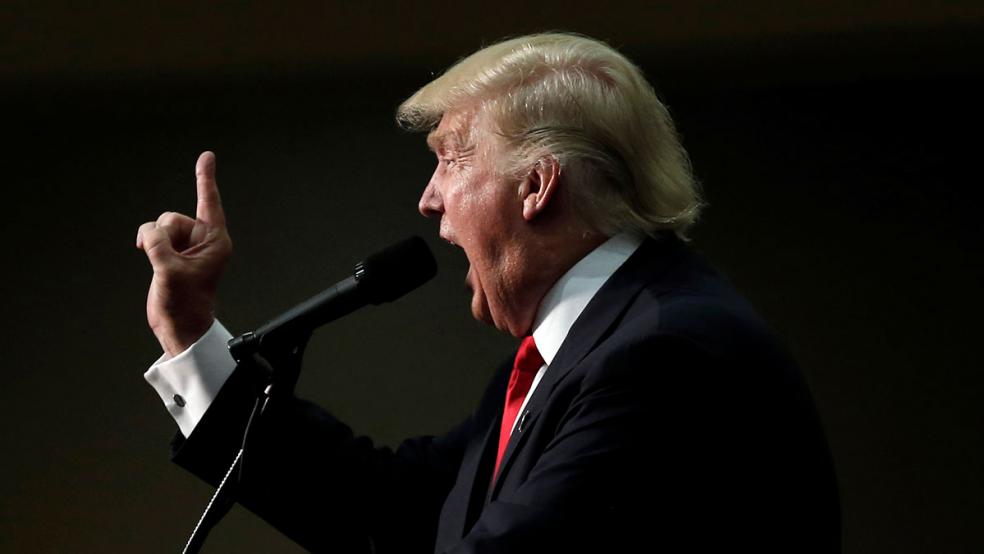Donald Trump and Hillary Clinton didn’t agree on much during their acerbic debate faceoff earlier this week, but one of the topics on which they found common ground was nuclear weapons.
“I agree with her on one thing,” the GOP nominee said. “The single greatest problem the world has is nuclear armament, nuclear weapons … Nuclear is the single greatest threat.”
Then he went on to criticize America’s nuclear capabilities compared to those of Russia.
Related: The 10 Most Expensive Weapons in the Pentagon’s Arsenal
“We have not been updating from the new standpoint. I look the other night, I was seeing B-52s there old enough that your father, your grandfather could be flying them,” he said.
What Trump saw “the other night” might have been a 60 Minutes report last Sunday that suggested the risk of nuclear conflict was rising as Vladimir Putin’s Russia looks west, sees weakness and thinks that in a conflict with NATO, a nuclear strike might shock the alliance into submission.
But the B-52 bombers Trump mentioned remain impressive machines, even though the newest one is more than 50 years old. And as Major General Richard Clark, who commands all nuclear bombers, pointed out, each B-52 can carry 20 nuclear-armed cruise missiles. “We can put this aircraft anywhere we want, anytime we want and both our allies and our adversaries take note,” he said.
So is America becoming a wimp in the nuclear schoolyard, as Trump suggests?
Related: Democrats Set a Nuclear Trap for Trump
In its annual report on nuclear forces released in June, the Stockholm International Peace Research Institute (SIPRI) said that while Russia has slightly more nuclear warheads than the U.S. – 7,000 to 7,290 – America has about 140 more “deployed” warheads. It defines deployed as “on missiles or located on bases with operational forces.”
SIPRI said that while the number of nuclear weapons globally is slowly decreasing from its current estimate of 15,395, both Russia and the U.S. have “expensive and extensive” modernization programs underway.
The U.S. will spend some $348 billion upgrading its nuclear weapons over the next decade, the SIPRI report says, and it estimates that upgrades may cost as much as $1 trillion over the next 30 years.
Related: Why Is the US Spending $1 Trillion on Nuclear Weapons?
Hans M. Kristensen of Denmark, a fellow at SIPRI and director of the Nuclear Information Project at the Federation of American Scientists, says in the report that “the ambitious US modernization plan presented by the Obama Administration is in stark contrast to President Barack Obama’s pledge to reduce the number of nuclear weapons.”
The world’s seven other nuclear powers -- the UK, France, China, India, Pakistan, Israel and North Korea – are pipsqueaks compared with the U.S. and Russia, which control 93 percent of the world’s stockpile. China is a distant third overall with 260 nuclear warheads.
60 Minutes said that while Russia has increased the size and frequency of its exercises, the U.S. hasn’t been a shrinking violet. Kristensen, who also spoke with the CBS newsmagazine, said that about a year after Russia annexed Crimea in March 2014, four unarmed B-52 Stratofortresses flew over the North Pole and North Sea in a show of strength. Fully loaded, they would have had 80 nuclear cruise missiles with a range of 1,500 miles that could have been launched into Russia.
“Eighty cruise missiles in your face. Was that the message?” correspondent David Martin asked General Clark.
“That’s a message for sure,” he said.





